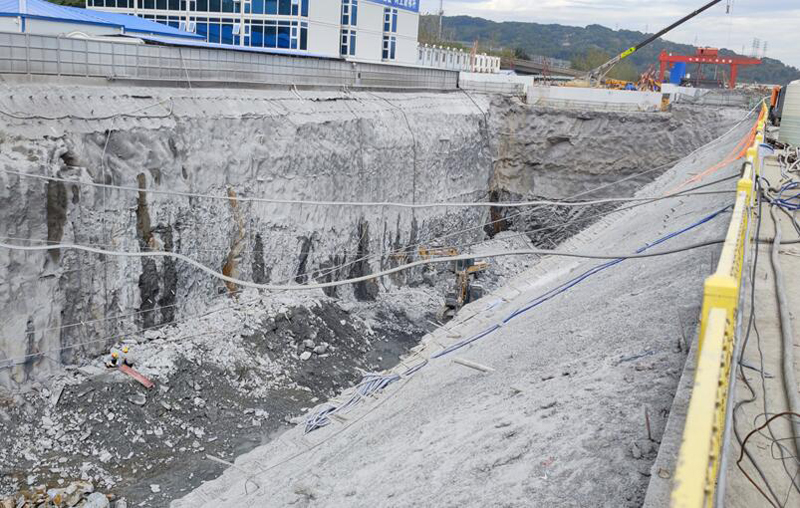

Slopes are a very common part of many construction projects, such as roads, railroads, dams, and civil engineering buildings. In most cases, we need to stabilize these slopes to prevent them from changing and causing immeasurable damage that we cannot afford. In particular, slopes with broken and loose geotechnical conditions need to be stabilized.
There are various slope stabilization methods that can be chosen for different conditions, and their advantages and disadvantages are obvious. Today, Hebei Jiufu will introduce you a new method - self-drilling anchor, which has been widely used to stabilize broken rocks and slopes.

What is self-drilling anchor?
How does self-drilling anchor stabilize fractured slopes and rocks?
What are the advantages of using self-drilling anchors to stabilize fractured slopes?
Self-drilling anchor, also known as self-drilling anchor system, is a tool for anchoring rock and soil. It consists of various types of drill bits for different working conditions, hollow reinforcement of various outer and inner diameters, connectors, plates, nuts, and retainers. The hollow steel surface can be supplied with R or T threads.
Self-drilling anchors are manufactured in sections in standard lengths of 2 m, 3 m, 4 m and 6 m. If a single hollow bar does not meet the maximum drilling depth, we can extend it with several connectors. Self-drilling anchors are available in outer diameters ranging from 25mm to 200mm, resulting in a wide range of ultimate and yield loads.
During use, the most important influence on the service life of anchor rods is the corrosion of the surrounding environment, so self-drilling anchor rods are treated with hot-dip galvanizing or epoxy resin for corrosion protection, or the hollow rod material can be changed to stainless steel.
Self Drilling Anchor Bolts
First, the self-drilling anchor will be drilled into the rock and soil of the slope to be reinforced to the required depth. At the same time, the grout is grouted inside the borehole from the inside out. Under high pressure, the grout can be pressed into the cracks in the rock or soil. Broken rocks or loose soil will be cemented together. With the drill bit (sacrificial) at the top of the hollow rod and the plate and nut at the other end, the self-drilling anchor can provide the force to stabilize the slope after drilling in.
Scope
Normally, we grout twice. The water-cement ratio is about 1:1 for the first time and 0.45~0.6:1 for the second time. the grouting pressure is about 0.3~0.5Mpa.
Self-drilling anchor integrates drilling, grouting and anchoring in one, which is suitable for broken rocks and difficult drilling conditions. The construction eliminates the casing and greatly improves the construction efficiency.
There is a rich variety of drill bits, which can be selected according to the nature of the rock and soil and improve the drilling efficiency.
It can fill cracks and reinforce rock and soil by pressure grouting, with good grouting diffusion radius and reliable anchorage quality.
The hollow anchor can be cut arbitrarily and lengthened by connectors. Therefore, it is suitable for construction in narrow spaces where large equipment cannot enter.